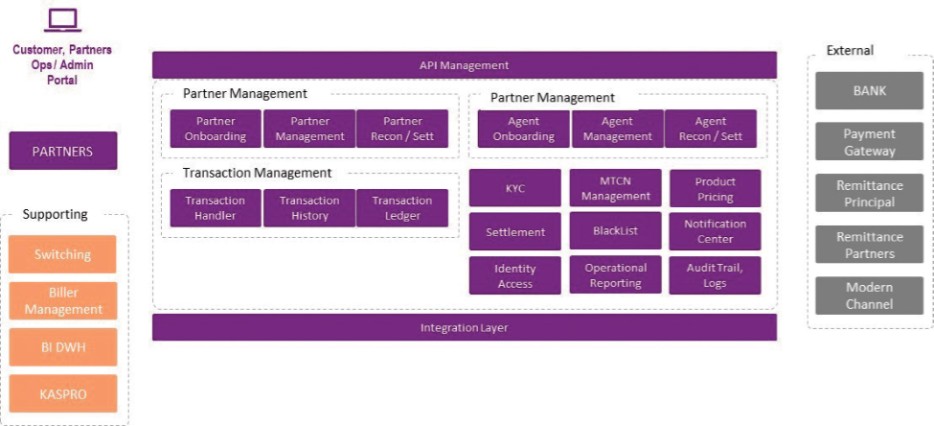(b) Since the date of incorporation of Acquiror, (i) there has been no action taken by Acquiror, its Subsidiaries, or, to the knowledge of Acquiror, any officer, director, manager, employee, agent or representative of Acquiror or its Subsidiaries, in each case, acting on behalf of the Acquiror or its Subsidiaries, in violation of any applicable Anti-Corruption Law, (ii) neither Acquiror nor its Subsidiaries has been convicted of violating any Anti-Corruption Laws or subjected to any investigation by a Governmental Authority for violation of any applicable Anti-Corruption Laws, (iii) neither Acquiror nor its Subsidiaries has conducted or initiated any internal investigation or made a voluntary, directed, or involuntary disclosure to any Governmental Authority regarding any alleged act or omission arising under or relating to any noncompliance with any Anti-Corruption Law and (iv) neither Acquiror nor its Subsidiaries has received any written notice or citation from a Governmental Authority for any actual or potential noncompliance with any applicable Anti-Corruption Law.
(c) Since the date of incorporation of Acquiror, and except where the failure to be, or to have been, in compliance with such Laws would not, individually or in the aggregate, reasonably be expected to have a material adverse effect on the ability of Acquiror or Amalgamation Sub to enter into and perform its obligations under this Agreement and consummate the Transactions, (i) there has been no action taken by Acquiror, its Subsidiaries, or, to the knowledge of Acquiror, any officer, director, manager, employee, agent or representative of Acquiror or its Subsidiaries, in each case, acting on behalf of the Acquiror or its Subsidiaries, in violation of any applicable International Trade Laws, (ii) neither Acquiror nor its Subsidiaries has been convicted of violating any International Trade Laws or subjected to any investigation by a Governmental Authority for violation of any applicable International Trade Laws, (iii) neither Acquiror nor its Subsidiaries has conducted or initiated any internal investigation or made a voluntary, directed, or involuntary disclosure to any Governmental Authority regarding any alleged act or omission arising under or relating to any noncompliance with any International Trade Laws and (iv) neither Acquiror nor its Subsidiaries has received any written notice or citation from a Governmental Authority for any actual or potential noncompliance with any applicable International Trade Law.
5.06 Employee Benefit Plans. Except as set forth on Schedule 5.06, or as may be contemplated by the Acquiror Incentive Plan Proposal, neither Acquiror, Amalgamation Sub, nor any of their respective Subsidiaries maintains, contributes to or has any obligation or liability, or could reasonably be expected to have any obligation or liability, under, any “employee benefit plan” as defined in Section 3(3) of ERISA or any other material, written plan, policy, program, arrangement or agreement (other than standard employment agreements that can be terminated at any time without severance or termination pay and upon notice of not more than 60 days or such longer period as may be required by applicable Law) providing compensation or benefits to any current or former director, officer, employee, independent contractor or other service provider, including, without limitation, all incentive, bonus, deferred compensation, vacation, holiday, cafeteria, medical, disability, stock purchase, stock option, stock appreciation, phantom stock, restricted stock or other stock-based compensation plans, policies, programs, practices or arrangements, but not including any plan, policy, program, arrangement or agreement that covers only former directors, officers, employees, independent contractors and service providers and with respect to which Acquiror, Amalgamation Sub or any of their respective Subsidiaries have no remaining obligations or liabilities (collectively, the “Acquiror Benefit Plans”) and neither the execution and delivery of this Agreement nor the consummation of the transactions contemplated by this Agreement (either alone or in combination with another event) will (i) result in any material compensatory payment (including severance, unemployment compensation, golden parachute, bonus or otherwise) becoming due to any shareholder, director, officer or employee of Acquiror, Amalgamation Sub or any of their respective Subsidiaries, or (ii) result in the acceleration, vesting or creation of any rights of any shareholder, director, officer or employee of Acquiror, Amalgamation Sub or any of their respective Subsidiaries to payments or benefits or increases in any existing payments or benefits or any loan forgiveness.
5.07 Governmental Authorities; Consents. Assuming the truth and completeness of the representations and warranties of the Company contained in this Agreement, no consent, approval or authorization of, or designation, declaration or filing with, any Governmental Authority is required on the part of Acquiror or Amalgamation Sub with respect to Acquiror’s or Amalgamation Sub’s execution or delivery of this Agreement or the consummation of the transactions contemplated hereby, except for any applicable Antitrust Law, Securities Laws, Nasdaq and the filing and effectiveness of the Amalgamation Documents and the PubCo Charter.
5.08 Financial Ability; Trust Account.
(a) Set forth on Schedule 5.08 is a true and accurate record, as of the date identified on Schedule 5.08, of the balance invested in a trust account at Morgan Stanley (the “Trust Account”), maintained by Continental Stock Transfer & Trust Company, a New York corporation, acting as trustee (the “Trustee”), pursuant to the Investment Management Trust Agreement, dated July 15, 2021, by and between Acquiror and the Trustee (the “Trust Agreement”). The Trust Agreement is in full force and effect and is a legal, valid and binding obligation of Acquiror and, to the knowledge of Acquiror, the Trustee, enforceable in accordance with its terms, subject to applicable bankruptcy, insolvency, fraudulent conveyance, reorganization, moratorium and similar Laws affecting









